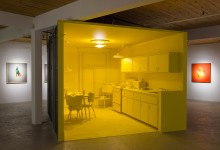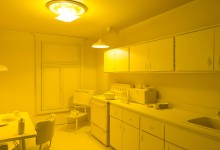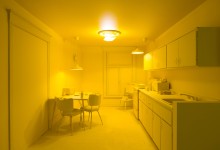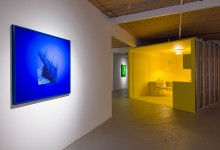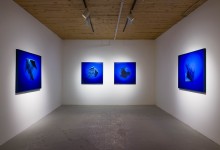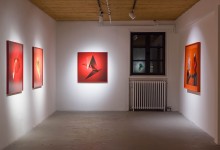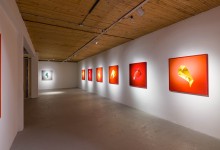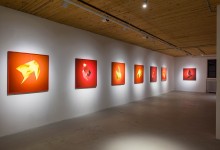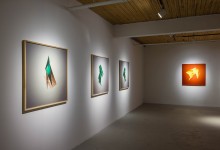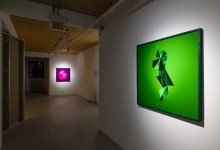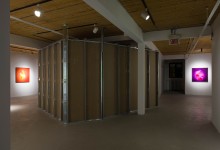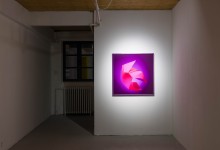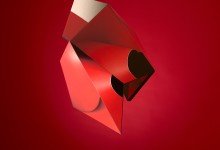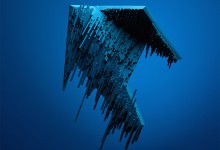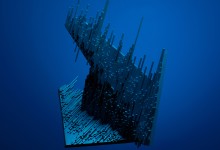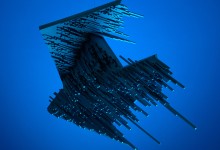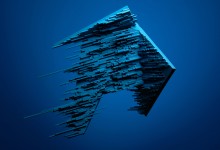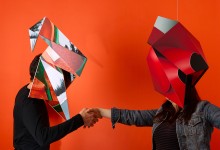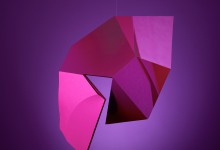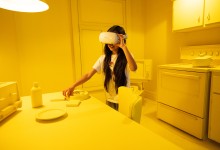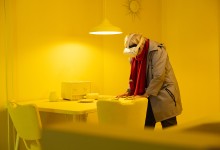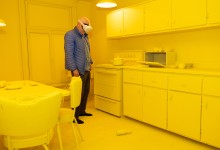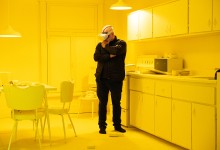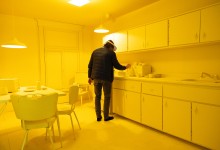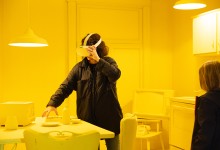Reception: Saturday, May 3, 2025 from 3 p.m. to 5 p.m.
Gilles Tarabiscuité: Réalité dés/augmentée 2.0
Text by Rebecca Johnson
Gilles Tarabiscuité creates images and spaces that blur the lines between the real world and the metaverse by using digital practices such as AI and 3D modelling. His work complicates our perception of “reality” by compelling visitors to reconsider their preconceived notions of their environments, ultimately inciting them to ask – in Tarabiscuité’s words – “is the real world truer than the virtual one?”
In Dis/Augmented Reality 2.0, Tarabiscuité presents Project nº 13, which showcases a replica of a 1970s kitchen enveloped in a monochromatic yellow and placed within a large rectangular box within the gallery. The artist first dismantles an actual kitchen from a Quebecois chalet that was set for demolition. The original kitchen space is then reinstalled in the artist’s living-room studio. Next, all of the furniture, alongside the carefully selected objects, are rendered into the virtual world with 3D modelling. Tarabiscuité reconstructs these same components as physical facsimiles using wood, plastic, glass, and other materials, and paints them all the same bright yellow. He then recreates the kitchen using its fabricated, or “fake,” counterparts into a maneuverable space. Once in the gallery, visitors access both the physical space, conveyed through the monochromatic replicas, and a virtual immersive space, that reveals the original kitchen in 3D, through Virtual Reality (VR) headsets.
This convergence of spaces is precisely what challenges our conception of reality. When visitors interact with the copies of furniture and everyday objects, they encounter a space that is both familiar, in form and layout, yet unfamiliar, in colour and display. When they then physically navigate the virtual space that reveals the original kitchen, they are again confronted with the dichotomy of common and unusual, this time by witnessing a real world through simulated means. Project nº 13, therefore, evokes themes of absence and presence by simultaneously demonstrating what is there and what isn’t. The actual kitchen does not exist in the gallery space, but when immersed in VR, visitors can see a real kitchen and they can interact with a real space (taking a seat at the table or picking up an object) – so is it real or not?
The strategic choice of a domestic space further suggests an experience that is seemingly known. The 1970s aesthetic references the kitchen of Tarabiscuité’s youth and is equipped with tangible objects that symbolize moments in his childhood – such as branded mac ‘n’ cheese boxes, a ketchup bottle, and even a looped clip of a Habs match on the television set. For the artist, the creation process can function as a form of mourning, reflecting on time, objects, and people lost. Whether personally connected to this specific setting, the familiarity of the kitchen – viewed and accessed in unconventional ways – can conjure up various memories for those who are immersed in it, calling back to a time before digital and virtual technologies so drastically permeated our everyday. By presenting viewers with a recognizable space in unrecognizable ways, Tarabiscuité ultimately invites viewers to question how the digital world complicates what is familiar, what is real, what is our past, and what is our future.
The artist wishes to thank the collaborators to the project:
Architectural plans: Yseult St-Jacques (Canada)
3D modeling: Maïté Ligot (Canada), Anindya Manna (India)
Immersive designer (Unity): Casey Alexander (Canada)
Photographies: Shin Yatagai (Japan), Miao Zhao (China)


